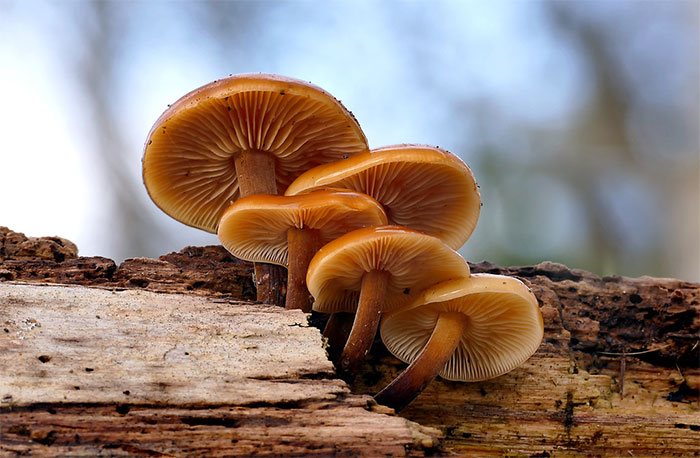A new study by British scientists reveals that mushrooms not only “communicate” with other individuals through mycelium but also use up to 50 words, astonishing everyone.
According to a report by the Guardian, British scientists observed four different types of mushrooms, including Flammulina (Enoki), Schizophyllum (Split Gill), Omphalotus olearius (Ghost Fungus), and Cordyceps sinensis (Caterpillar Fungus), and found that they can use mycelium to transmit electrical impulses to engage in conversations among individuals.

In some special cases, they communicate with surrounding mushrooms.
Researchers have now identified over 50 words through the conversations of these fungi.
The scientific team published their research report in the latest issue of the Royal Society Open Science journal, indicating that in certain special cases, they will communicate with surrounding mushrooms.
For example, in some species of mushrooms that grow on wood, when the mycelium comes into contact with the wood, its rate of electrical impulse transmission significantly increases, similar to “broadcasting news” to nearby individuals of the same species; if they encounter a dangerous environment, they will also transmit special signals to inform their peers about the surrounding conditions.
Researcher Professor Andrew Adamatzky pointed out that the “conversations” between these fungi can help maintain group integrity and operate similarly to wolf howls. Even more astonishing is that the communication process among these fungi closely resembles how human neurons transmit messages.
For a long time, taxonomists classified fungi as members of the Plant Kingdom. This classification was primarily based on the similarities in the lifestyles of fungi and plants: both fungi and plants are mostly non-motile, and their forms and habitats share many similarities (many species grow in soil, and some fruiting bodies resemble plants like moss).
Furthermore, both have cell walls, a characteristic that animals lack. However, fungi are now recognized as a distinct kingdom, entirely separate from plants and animals. Numerous studies have highlighted the morphological, biochemical, and genetic similarities and differences between fungi and other kingdoms. For these reasons, fungi have been placed in their own unique kingdom.
Fungi inhabit a completely different world, unlike any other kingdom, yet each structural part shares some similarities. They belong to the fifth kingdom (the last) among the five kingdoms of life on Earth, which include Monera, Protista, Plantae, Animalia, and finally FUNGI (Mycota). The discovery of the unique language of fungi will assist scientists in further exploring the remarkable aspects of the fungal kingdom.


















































